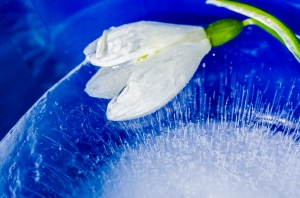Updated: 07/04/2025
Timing is everything. For an interaction to take place, organisms not only have to be at the same place, they need to be there at the same time. The timing of flowering has likely been an important trait ever since the first flowers appeared on Earth ~200 million years ago; and when the climate changes, phenological changes belong to the most striking ecological responses. The timing of biological events is an important and exciting phenomenon in life-history evolution.
There is currently widespread concern that climate-driven changes in the timing of seasonal events may disrupt important ecological interactions such as pollination or cause temporal mismatches between critical periods in animal life-cycles and food availability. Phenological change has received substantial attention and has also been treated in thematic issues in other journals. This thematic issue of Oikos, however, has a more specific focus on the interplay between phenology and ecological interactions and on understanding phenological change from the perspective of life-history evolution. The articles, contributed by ecologists with expertise in phenology and/or theoretical ecology represent a wide range of scientific approaches. The volume contains theoretical investigations emphasizing the role of phenology in meta-community networks (Revilla et al.), in evolutionary games (Day and Kokko, Schmidt et al.) and in density-dependent population dynamics (Reed et al.). It also contains field studies of timing of reproduction in species adapting o climate change (Bennet et al., Van Dyck et al.) and experiments showing how timing of germination influences interspecific competition among plants (Cleland et al.). Among the contributions are furthermore reviews and conceptual papers on phenological change in the context of plant-pollinator interactions (Forrest), mutualisms in general (Rafferty et al. ) and plant life histories (Ehrlén) along with a synthesis of theory emerging in this field (Johansson et al.).
Phenological data continues to accumulate in ongoing, large-scale monitoring programs and we have increasingly refined methods to monitor changes. However, so far our knowledge has to a large extent been descriptive and any explanations for observed phenology patterns have been proximate and focused on abiotic influences. This special issue deals with how ecological interactions influences phenological patterns and vice versa. Some of the contributions have also provided ultimate explanations to phenological processes and patterns. That way, this issue offers a novel take on an old research topic and it provides a snap shot of the latest developments in this exciting research area.
Jacob Johansson, Jan-Åke Nilsson and Niclas Jonzén, editors of Oikos issue “Phenological change and ecological interactions”

